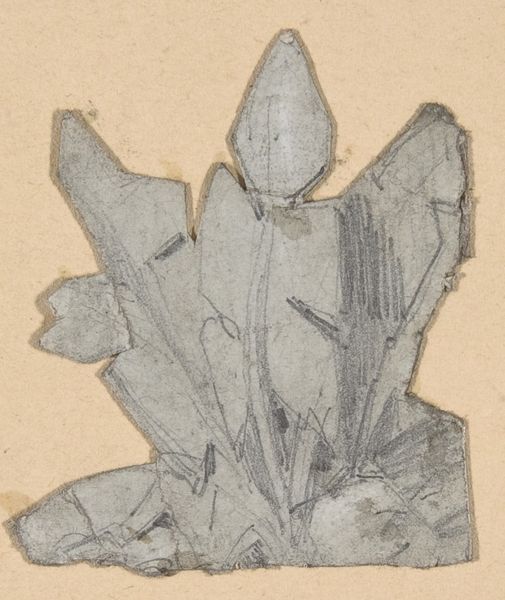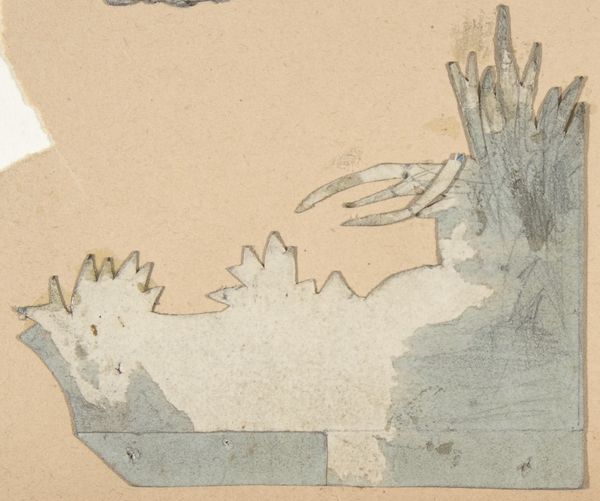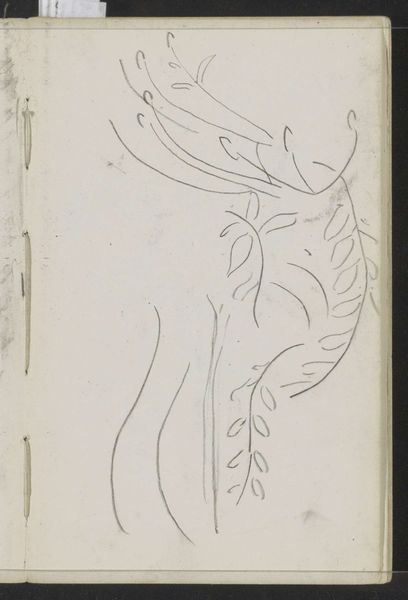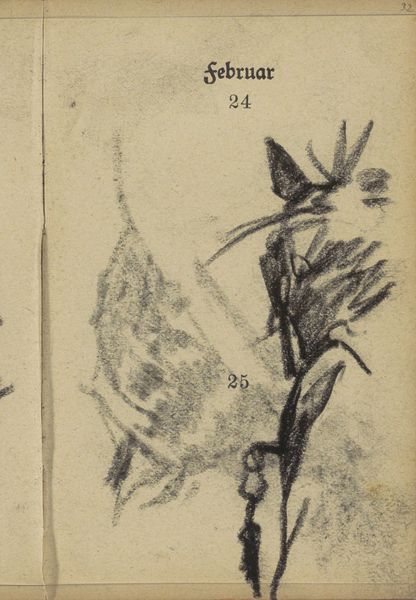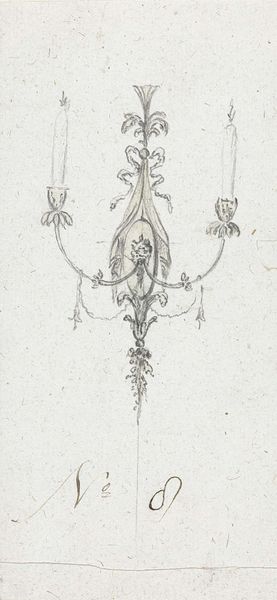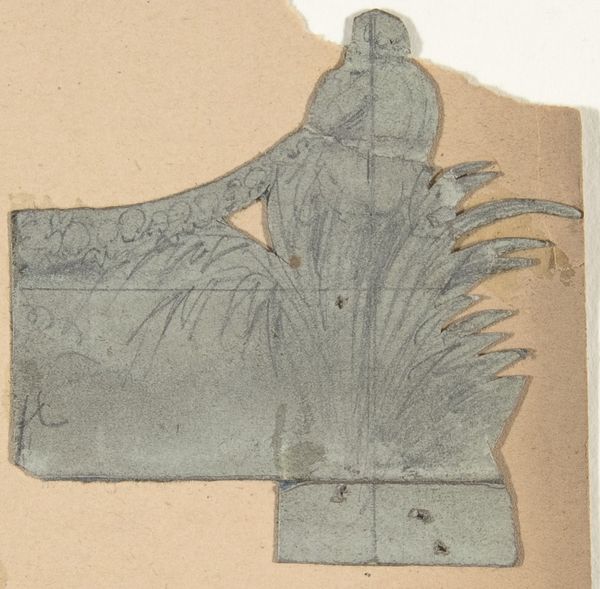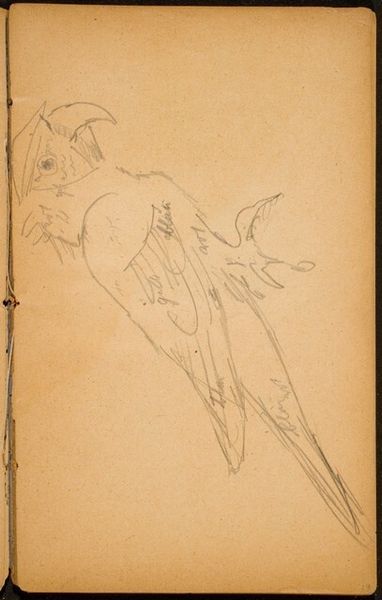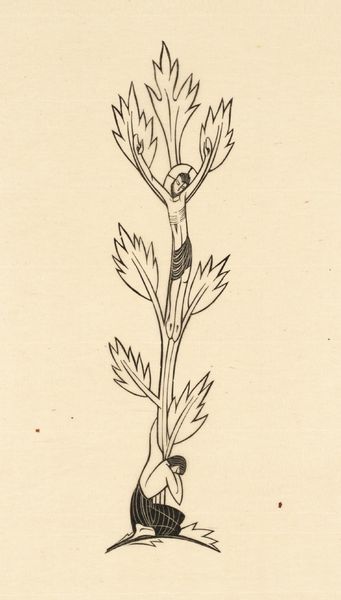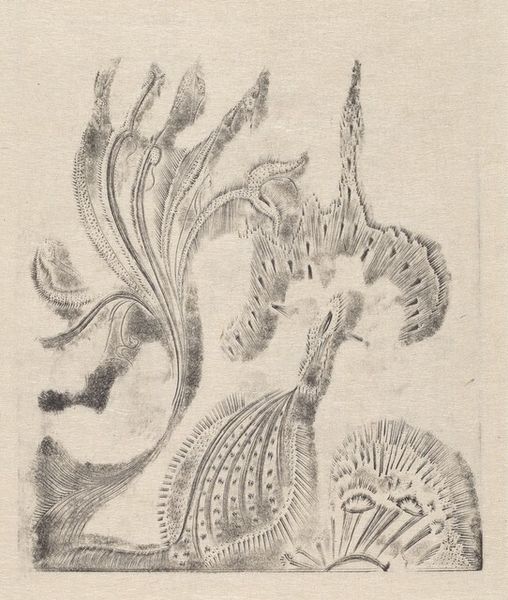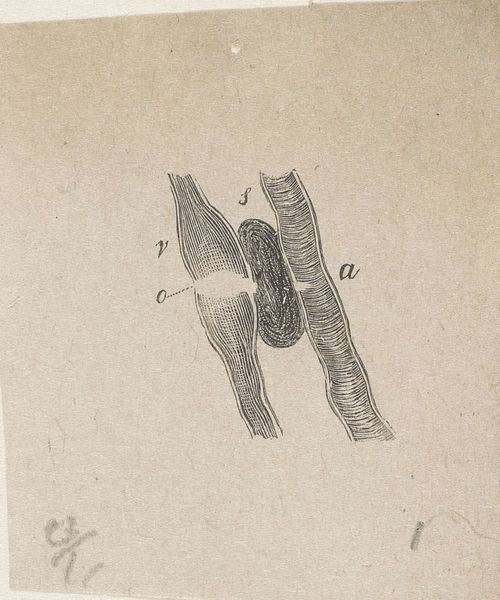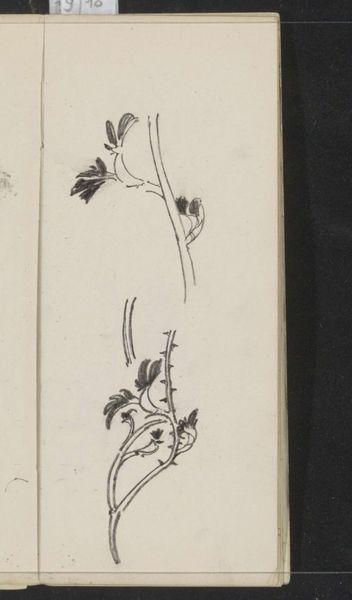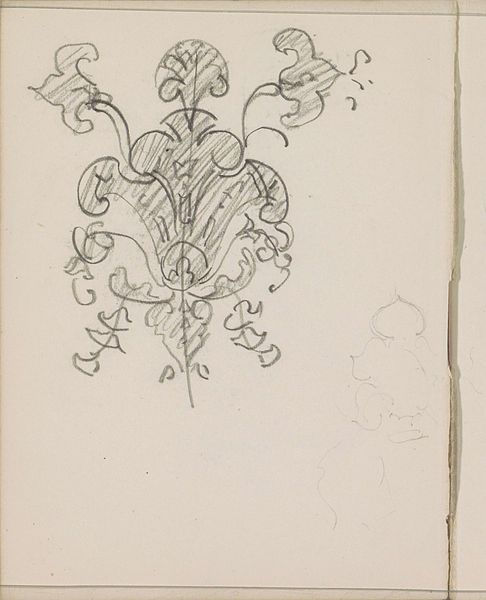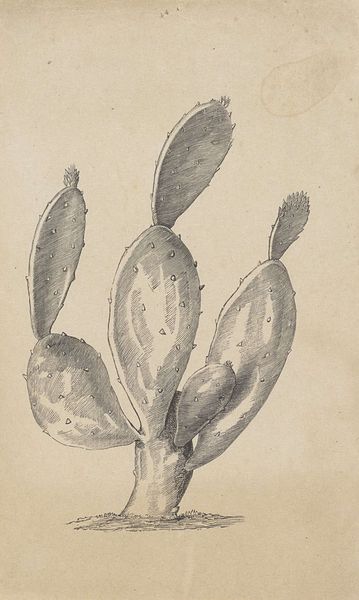
Design for a Stage Set at the Opéra, Paris 1825 - 1890
0:00
0:00
drawing, coloured-pencil
#
drawing
#
coloured-pencil
#
coloured pencil
Dimensions: Irregular sheet: 1 5/16 x 1 5/16 in. (3.4 x 3.4 cm)
Copyright: Public Domain
This set design for the Paris Opéra was made by Eugène Cicéri in the 19th century, using graphite and watercolor on paper. A tiny fragment, it gives us a glimpse into the artist's process. The delicate application of watercolor suggests a concern with capturing ephemeral qualities of light and atmosphere on stage. Graphite, with its dry, almost scratchy texture, defines the solid forms of the leaves and vase. Notice the way the artist used these materials to create an illusion of depth, despite the fragment's small scale. The Opéra was a cultural powerhouse, employing many designers and artisans to realize elaborate productions. Set design was a demanding field, with a highly competitive atmosphere. Designs were often collaborative, so this drawing may have been part of a larger project. Consider, too, the labor required to transform Cicéri's sketch into a full-scale stage set. Skilled carpenters, painters, and stagehands would work to bring his vision to life. By attending to the materials and processes behind this drawing, we can appreciate the rich cultural history of theatrical production in 19th-century Paris.
Comments
No comments
Be the first to comment and join the conversation on the ultimate creative platform.
